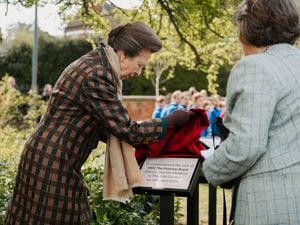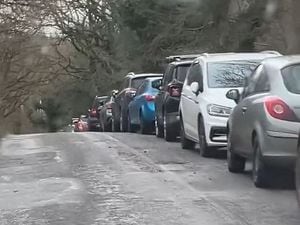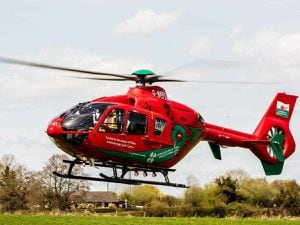Shropshire's Victoria Cross hero immortalised in dramatic painting
The heroism of the only Shropshire regiment soldier to win the Victoria Cross in the Great War is captured in art in a specially commissioned painting by Wellington artist David Thorp.
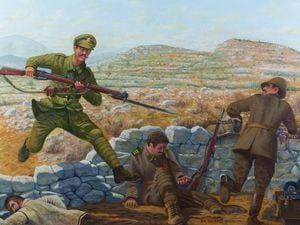
The depiction of Private Harold Whitfield of Oswestry storming a Turkish machine gun position is the second of a trilogy of paintings David is doing for D (Shropshire Yeomanry) Squadron Royal Yeomanry, based in Dawley Bank.
Whitfield, of Middleton, served in the Shropshire Yeomanry, which in 1917 became the 10th Battalion of the King's Shropshire Light Infantry, which means both regiments can claim the honour of the VC award.
He received the VC, the highest award for valour, for his actions in fighting north of Jerusalem in March 1918 when he single-handedly attacked a Turkish machine gun post, killed or bayoneted the entire crew, and then turned the gun on advancing Turks.
Whitfield, by then promoted Sergeant, was presented the VC in person by King George V in a ceremony in Leeds in May 1918.
David did intensive research for his depiction, which is painted in acrylic on board.
He said: "The original idea for the painting came from Captain Nick Trevor, who envisioned having a trilogy of paintings, the centre one commemorating the history of the Shropshire Yeomanry, and hanging either side a painting of a notable award – on the one side a painting of the action by Private Harold Whitield, VC, and on the other side a painting which will commemorate the award of a Military Cross, which I have not yet started.
"One thing that Nick was sure about was that he did not want just a standard portrait of these heroes, he wanted an action painting of each symbolising how they achieved their awards.
"I had been given some background information by Nick, and I obtained the rest via the internet. However, I did spend some considerable time researching the Turkish element of which I had no knowledge. While under German direction they were a bit of a ragtag and bobtail outfit, and relatively poorly equipped.
"The painting took 157 hours to complete. It was a little complicated when I discovered that the terrain was not, as I had expected, all sand and palm trees, but terribly inhospitable rocky ground which took quite some research on Google Earth. I have never painted so may stones!
"Three years ago I was commissioned to paint a portrait of a cavalryman from Worcester on his horse, who fought in battles that Whitfield had fought in, and the background to his painting was all sand. I wrongly assumed that the background to the Whitfield painting would be the same."
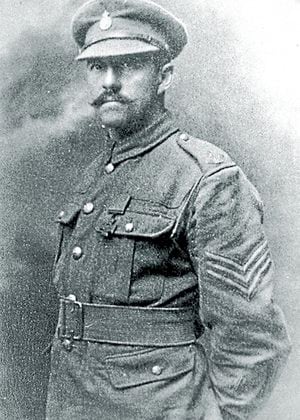
David's first painting of the trilogy already hangs in the army centre at Dawley Bank. It reflects centuries of regimental tradition and history in a composition which includes The Wrekin, Monte Cassino in Italy – scene of a bloody battle in 1944 – and features with symbolic meaning.
Whitfield was feted as a hero on his return home to Oswestry. He died in 1956 after being knocked off his bicycle by an Army vehicle while cycling home from work at Express Dairies in Whittington.
His cherished Victoria Cross went on to have adventures of its own. In 1976 it was stolen from an Oswestry bank vault by a 21-year-old bank clerk who tried to sell it, but the medal was quickly recovered.
It was presented by his family in 2000 to the Soldiers of Shropshire Museum – formerly called Shropshire Regimental Museum – at Shrewsbury Castle, where it is on display.
Also on display is a good quality replica of Whitfield's VC which was discovered in mysterious circumstances in London not long ago.
The finder said it had been lying on the Clerkenwell Road, although documentation from the time of its donation to the museum in 2010 says it was found in the lift shaft pit area of the Barbican arts centre.
To date no satisfactory explanation has been found to the riddle of why such a convincing replica was created.


